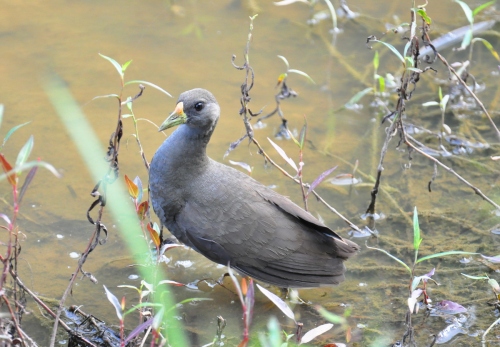Rainfall is imminent in the next few days; “90% chance of showers and possible thunderstorms with areas of rain” but by Jan 2nd the forecast is just “Rain. Possible storm”. It seems like water levels in the wetlands are about to rise but while there are still lots of muddy edges and shallow ponds full of fish and crustaceans there are busy birds with full bellies.

Great Egret trying to get a firm grip on a River Prawn. Macrobrachium sp.

Now in a firm hold but still quite a challenge to swallow

Azure Kingfisher with one of many fish caught in a morning session.

Azure Kingfisher often flies to this horizontal perch as it’s convenient to use for bashing prey prior to consumption.

Pale-vented Bush Hen – while we did see it catch fish occasionally it was mainly hunting on or around the vegetation. This is possibly a dragonfly nymph.
Birds all have their own particular hunting methods and it is quite amusing to watch a Great Egret with its ‘wait quietly and pounce’ method becoming annoyed at a Little Egret which tends to be rather hyperactive, stirring the water up with its feet to see what is disturbed. This Little Egret is in breeding colours and plumage, gloriously white even though it is spending its days in the muddy shallows.

Little Egret in the process of swallowing a fish.










